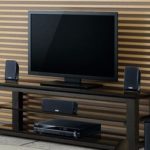Choosing acoustics for home theater
The most important component modern home theater is acoustics with a large set of different-purpose speakers. Their task is to convey all the nuances of sound and special effects to immerse the viewer into the magical world of cinema. It’s not easy to choose a system, but even more difficult. set correctlybecause each column has its own purpose.
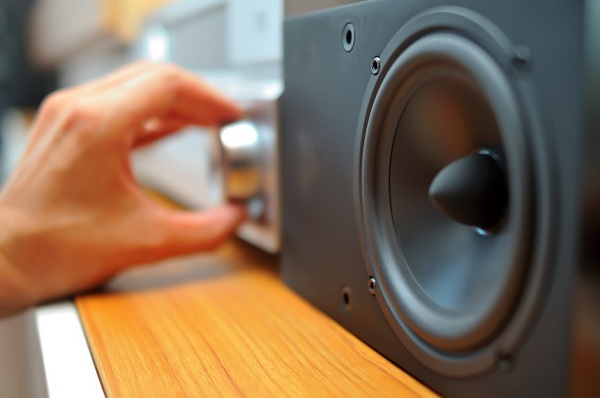
Content
Configuration
Speakers for home theater are located around the perimeter of the room, around the viewer, at strictly defined equal distances:
- front - central;
- on the sides - front;
- rear - rear.
You can install them on the floor and sometimes use wall option at the level of the viewer's head, to create a greater perception of the nuances of the sound.
In addition to the standard set of speakers, the system includes at least two sound sources:
- Acoustics of the central channelwhich is installed under the screen or a flat-screen TV. It is placed in a horizontal position, the task - to voice the dialogues.
- Subwooferresponsible for the transmission of low frequencies.
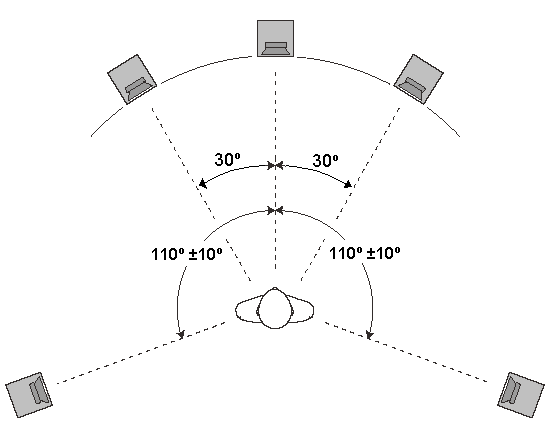
The classic set of speaker system for home theater type 5.1 consists of the following components:
- Front speakers located on the sides - 2 pcs.
- Rear rear speakers - 2 pcs.
- The central column, horizontally placed in front of the TV or behind the screen - 1 pc.
- A subwoofer that can be located anywhere in the room. Before installing an empirical method, determine the option of the best possible sound.
This set is ideal for the average buyer, and is considered budget speaker options for home cinema.

Location options
Installation of columns is possible in three versions:
- outdoor;
- wall mounted;
- ceiling.
It is important not to put them close to the surface of the walls, so as not to lose the sound quality.For more financially free users looking for maximum sensations, there are 7.1, 9.1 and even 9.2 systems. Their cost is much higher, which is not always possible to say about quality.
Today it has become fashionable to use ceiling speakers: they are installed in recreation areas where music is listened to or a home cinema is installed. They can be built-in type. The classic-style layout is still relevant: front, rear and center. This is a purely personal preference.
Important! Ceiling-mounted speakers are fixed only on a very strong base of metal profiles or wooden beams.
Before you make the final choice, make sure the merits of the ceiling speakers, and that their appearance is perfect for the interior of the room. After all comparisons, feel free to purchase the selected option. Ceiling devices fill the entire room with a uniform sound, and those present can feel like in a concert hall or movie theater.
Nuance: when placing the rear speakers are a little closer to the audience than the others, so you need to balance the virtual distance with the help of the receiver settings to get the perfect sound.
Power nuances
When acoustics are made on the basis of passive sound emitters that do not contain built-in amplifiers, then its power is considered to be nominal specialists. Manufacturers indicate Root mean square - RMS power of the amplifier of the speaker system, at which it can operate for an arbitrarily long time.
Exists Peak Music Power Output - peak music output power, which any acoustics can withstand only briefly, not more than a second. The main criterion for choosing the power of the equipment is the size of the room where it will be installed:
- with an area of 17 square meters. 60-80 watts will suffice;
- if the room is 20-30 square meters. m, then oriented to 100 watts;
- with large, spacious living rooms of more than 40 square meters. m., you will need 150-200 watts.
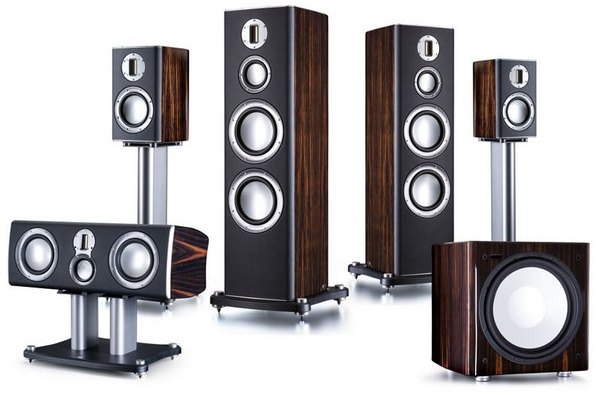
All the above calculations are subject to the use of single-channel acoustics. In the final selection of a home theater system, two basic parameters must be considered: plant capacity and the quality of its sound. They have a significant impact on the overall price, but the volume and sound pressure level will depend on the power.
Expert advice! Included home theater all devices have the same sound settings. If you pick your own speakersthen there may be different discrepancies in the sound range.
For a small room where movies will be watched by no more than two people, it is enough to purchase a system with compact speakers of the ceiling type, which is considered by experts to be a more acceptable option when located in confined spaces.
Sensitivity
In home theater acoustics, the sensitivity is in the range of 84–102 dB, which means the following: with a signal with a power of 1 W and a frequency of 1 thousand Hz, the system components exert such sound pressure at a distance of one meter. The more such a parameter, the louder the sound at constant power will be much higher, but one negative aspect must be taken into account - a rather delicate and sensitive speaker system can be damaged by a very powerful amplifier, the speakers simply will not stand it.
Therefore, when independently selecting all the components of the future cinema, it is necessary to take into account their coordinated and safe operation.
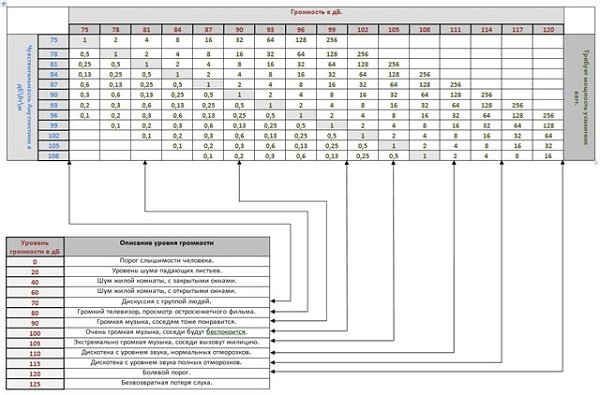
The frequency response
Amplitude frequency response - this is the dependence of the amplitude of the output signal from the natural frequency of the incoming signal; ideally, the graph looks like a straight line, but in practice this is impossible, t.to. at various frequencies it has ups and downs.
Our unique hearing aid is able to perceive and distinguish sounds with a frequency of 20 Hz - 20 kHz, however, this is a purely individual feature of each person - the recognition of high frequencies decreases with age, so older people do not hear everything that they are told.
In acoustics installed subwoofer, reproducing the sounds of low frequency 2-250 Hz. Therefore, the speakers do not need good amplitude-frequency characteristics at such frequencies, the main thing is that the specified values should not be exceeded.
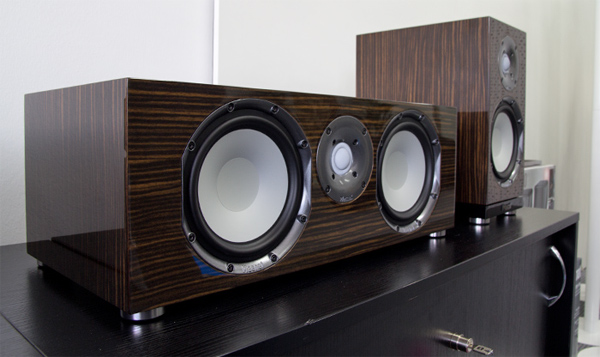
Briefly about the harmonic distortion
The mechanism of converting electric signal into sound signal has only one drawback: during playback, sounds equal to the fundamental frequency appear, they are called harmonics. Not every manufacturer indicates such a parameter in the characteristics of the speakers produced, although it has an international designation - THD or Total Harmonic Distorsions (total harmonic distortion), which is given by% or dB.
The smaller the value of this parameter, the better the sound of the entire acoustics.
Final choice
It’s not so easy to choose a quality speaker system: there are many offers, it all depends on your preferences and financial resources. To facilitate the selection, we present a comparative table of basic parameters and prices.
Table of comparative characteristics of acoustic systems
| Unit rev. | Jamo A 102 HCS 5 | Focal-JMlab Sib & Cub 2 | Klipsch Cinema 6 | JBL CS 680 | |
| satellites | two lane | ||||
| frequency response |
Hz-kHz |
150—20 |
75—20 |
116—20 |
100—20 |
| sensitivity | dB / V / m | 86/2,8/1,0 | 90/2,8/1,0 | 89/2,8/1,0 | 88/2,8/1,0 |
| resistance | Ohm | 6,0 | 8,0 | ||
| Centre. speaker | two lane | ||||
| frequency response |
Hz-kHz |
150—20 |
75—20 |
105—20 |
100—20 |
| sensitivity | dB / V / m | 86/2,8/1 | 90/2,8/1 | 90/2,8/1,0 | 88/2,8/1,0 |
| resistance | Ohm | 6,0 | 8,0 | ||
| subwoofer
bass speaker |
cm |
20 |
21 |
25 |
20 |
| power | W | 200 | 100 | 200 | 125 |
| frequency response |
Hz |
36—150 |
40—150 |
35—120 |
35—160 |
| the cost | rubles / euro | 10000/- | -/700 | -/1000 | 14000/- |
It can be seen from the table that the price is not always guaranteed to be of excellent quality, especially since cables and connecting wires will have to be purchased separately, as in variants 1 and 3. The difference in performance is not as significant as the diameter of the dynamics of the subwoofer, but some Jamo parameters are impressive, not to mention the cost difference.
Choosing a technique, guided by personal preferences. Pay attention to the design: all columns should fit into the interior as in the wall version of the location, and in any other.

/rating_off.png)






